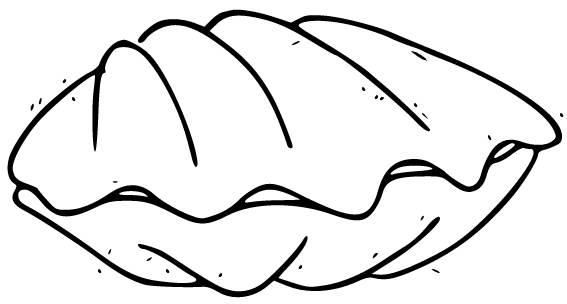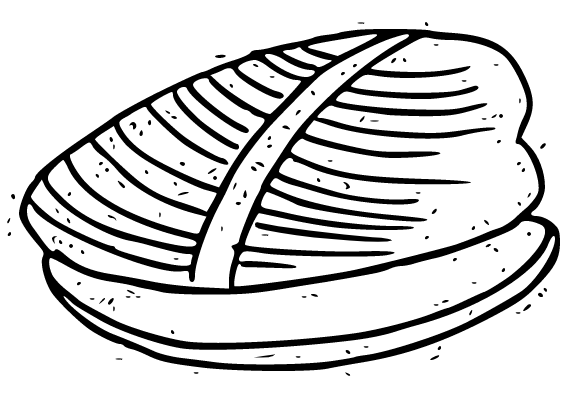-

-
The Discerning Mollusk's Guide to Arts & Ideas
-


hat can you tell me about James Joyce? I shared a bus ride with him about a decade ago. He was drunk, I was not, and sure enough—he needed me to know he wasn’t bluffing—here was his driver’s license: James Joyce of Los Angeles, California, fifty-two years old, a green-eyed veteran of foreign wars.
There are rarer names, of course, and—like the Shakespearean who shakes hands with a New York cabbie called Hamlet—greater shocks to the lightning rod of personal experience. Unhaunted by homonyms myself, I had always worn my own name lightly. It took the advent of Facebook for another Eric Bies—and another, and another—to spiral forth into consciousness.
For the famous, Wikipedia would seem to suffice. Of Henry Adamses, for instance, one finds oodles and oodles. Tap your hammer against a name like “Apple Martin,” however, and you’ll probably be redirected to mother Gwyneth Paltrow’s page. In the off chance you aren’t, you may end up encountering her inversion: Martin Apple, the genetic engineer who “received notoriety as a young scientist when he was misquoted in the New York Times as quipping ‘We are going to make pork chops grow on trees!’”
Just as Gen-Z Americans in thrall to Japanese culture might do well to acquaint themselves with Lafcadio Hearn, so some Asian Europhile must stumble upon the story of that other transcultural trailblazer, Arcadio Huang, who carried China into the courts of the Sun King.
The perfect homonym is, perhaps, less intriguing than the near-miss. So what if the physicists declare that the universe is running down? The world might as well grow by one aesthetic principle. To illustrate, the historian and the mathematician indicate three “malaise.” There was the Frenchman Jean-François Millet (bearded like a lion), the Englishman John Everett Millais (bald as a billiard ball), and the American Francis Davis Millet (mustachioed academically), nineteenth-century painters all.
These are not the literary doubles (or triples, or troubles) of Dostoevsky or Poe. The spellbinding quality of their multiplicity, in other words, owes nothing to the terror of duplicity. In fact, it is by these lights that we look again at what we thought we knew and find Pharaoh calling on Joseph to play Freud a little silly. His double dream is not a warning; it’s a joke—foreboding because mysterious, mysterious because he fails to recognize that the story has been told in reverse. Why else would cows devour cows? The wheat they would typically eat has already been gobbled up!
On the table at which I am typing are two books that I have recently finished reading. One is Édouard Levé’s final novel, Suicide. In translator Jan Steyn’s afterword, I learn that Levé is also a noted photographer:
In a series called Homonyms, Levé takes neutral frontal portraits of “ordinary” people who happen to share a name with someone famous. The faces of Yves Klein or André Breton, for example, are on display. But of course not the Yves Klein, or the André Breton.
Jorge Luis Borges pursues a similar itinerary in one of his most memorable ficciones, and the question remains: which Quixote is the Quixote?
That’s the nub of the rub. Readers have never struggled to swallow down their Pierre Menards. The invention of the novel itself—and its healthy proliferation, from Defoe to Dazai—is unthinkable without the assistance of such clever dishonesty. Indeed, half the genius of Robinson Crusoe resides in the last three words of its title, Written by Himself.
Levé’s novel conspicuously rejects these narrative strategies, by which bows are fastened to make the made-up real. Suicide’s “I” is repressed, camera-shy, opting throughout to address a ghostly, abstracted “you.” This “you”—a friend who killed himself decades prior—never takes shape the way the reader wishes he would. It’s as though the act of self-annihilation, the novel’s very premise, fails to flash past our incredulity; it remains unreal. This flaw, like a crack in the windshield, undermines the integrity of the work as a whole. Undoubtedly, it is dreadful work making guesses about motives. But the timing appears inescapably pertinent. Ten days after delivering the manuscript to his publisher, Levé himself committed suicide.
The other book on the table is also titled Suicide. It is a memoir, self-published by a writer named Brian A. Oard, and it is everything Levé’s novel is not. You have yet to read it.

Eric Bies is a high school English teacher in Southern California. His writing has appeared in 3 Quarks Daily, The Collidescope, and Essay Daily. His poetry was awarded first prize in the Aquarium of the Pacific Poetry Contest.